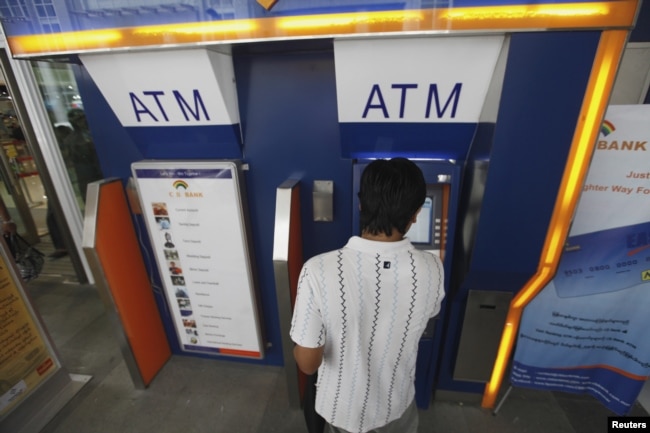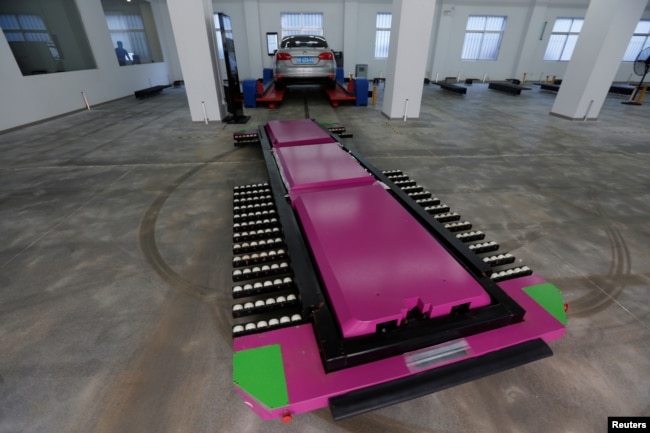Will Robots Replace Human Drivers, Doctors and Other Workers?
The impact of automation on U.S. jobs is open to debate. Robots have displaced millions of manufacturing workers, and automation is getting cheaper and more common, raising concerns it will eventually supplant far more workers in the services sector of the economy, which includes everything from truck driving to banking.
University of Virginia Darden School of Business Professor Ed Hess says we are just starting to see automation’s impact. “It is going to be broad and it is going to be deep,” he said, adding that “tens of millions” of jobs could be at risk.
Data from the Bureau of Labor Statistics show 5 million U.S. manufacturing jobs have disappeared already.
While some politicians blame trade for the job losses, most economists say automation is mainly to blame as robots do routine factory tasks previously done by humans.
Hess calls self-driving cars and trucks a threat to millions of human jobs, and says fast-food workers are also vulnerable, as companies install electronic kiosks to take restaurant orders. McDonalds says displaced workers will be reassigned to other tasks.
will robots take humans job
robot film

FILE – Fast-food chain Wendy’s is installing self-ordering kiosks in 1,000 locations nationwide. (Wendy’s)
The professor says research shows nearly half of U.S. jobs could be automated, including retail store clerks, doctors who scan X-rays for disease, administrative workers, legal staffers, and middle managers.
Future of jobs
Starting more than a century ago, advancing technology changed the United States from an agrarian to a manufacturing economy. Displaced farm hands eventually found factory work, but the transition took years. This new transition may also take a time because, Hess says, “We’re not going to anywhere produce the number of jobs that we automate.”
But 50 years of experience in banking shows that while automation may change the industry, it does not necessarily end jobs for humans.
The first Automatic Teller Machines, or ATMs, were installed 50 years ago, and there are now 420,000 in the United States. International Monetary Fund analysis shows the number of human tellers did not drop, but rose slightly.
“Humans were doing mostly service and routine types of tasks that could be converted into more automated tasks,” Tremont Capital Group’s Sam Ditzion said. But “the humans then became far more valuable in customer service and in sales in these branches.”

FILE – A man uses an automated teller machine (ATM) machine at a shopping center in Yangon, Burma, May 27, 2012.
In a Skype interview, Ditzion said that while automation can be “scary,” the oversight of ATMs created new kinds of work for “tens of thousands of people.”
Automation grows
A report by Redwood Software and the Center for Economics and Business Research (CEBR) says surging investment and falling prices will help robotics grow.
Redwood’s software handles business processes that are repetitive, rule-bound and tedious.
CEBR Economist David Whitaker says as growing fleets of robots take over mundane tasks, higher productivity could bring higher wages for some human workers. He says people who want to stay employed must hone skills that robots can’t handle, such as unpredictable work or the need for an emotional human connection.
One example, according to Alex Bentley of Blue Prism software, is a program that helps law firms examine visa applications. The robot enters data but gets help from a human partner with problems such as missing information. Bentley says some human jobs have been lost, but in other cases displaced workers move within the firm to new work, particularly jobs that are “customer-centric.”
U.S. Senator Chris Coons says Germany and other nations use training programs to help their citizens get and keep jobs in a changing economy. The Democrat says America’s competitors invest six times what the U.S. does in skills development and workforce training, while Washington has slashed funding for such programs. Coons and a Republican colleague, Senator Thom Tillis, are seeking more help for schools, companies, workers and government agencies operating programs to upgrade the workforce.

FILE – A laser-guided “parking robot” moves to slide under a car at a research and development center in Shenzhen, China, June 29, 2016.
New opportunities
While workers need to make some changes, philosopher and professor Ed Freeman of UVA’s Darden School of Business says companies also need to rethink their basic purpose. He says businesses must do more than just maximize value for shareholders.
“I need red blood cells to live,” he said. “It doesn’t follow that the purpose of my life is to make red blood cells. Companies need profits to live, it doesn’t follow that the purpose of a company is to make profits. We have to think through this idea about what purpose is in business.”
Freeman says he is “optimistic” because many jobs, such as creating applications for smartphones that would have been unimaginable a few years ago, are creating thousands of opportunities. He is also encouraged by his many students who, he says, bring new ideas, passion and energy to the task of starting businesses that will create new kinds of jobs.
Freeman is convinced that the problem isn’t the tsunami of lost jobs, it is the lack of “really good ideas” for creating a safety net for people who will lose jobs to automation.
Many experts worry about growing levels of automation — particularly advanced forms known as artificial intelligence — hurting employment for U.S. workers.
But U.S. Treasury Secretary Steven Mnuchin says it will be “50 or 100 years” before artificial intelligence takes American jobs. In an interview with Mike Allen of AXIOS, Mnuchin said, “I think we are so far away from that, [it is] not even on my radar screen.”
No comments:
Post a Comment